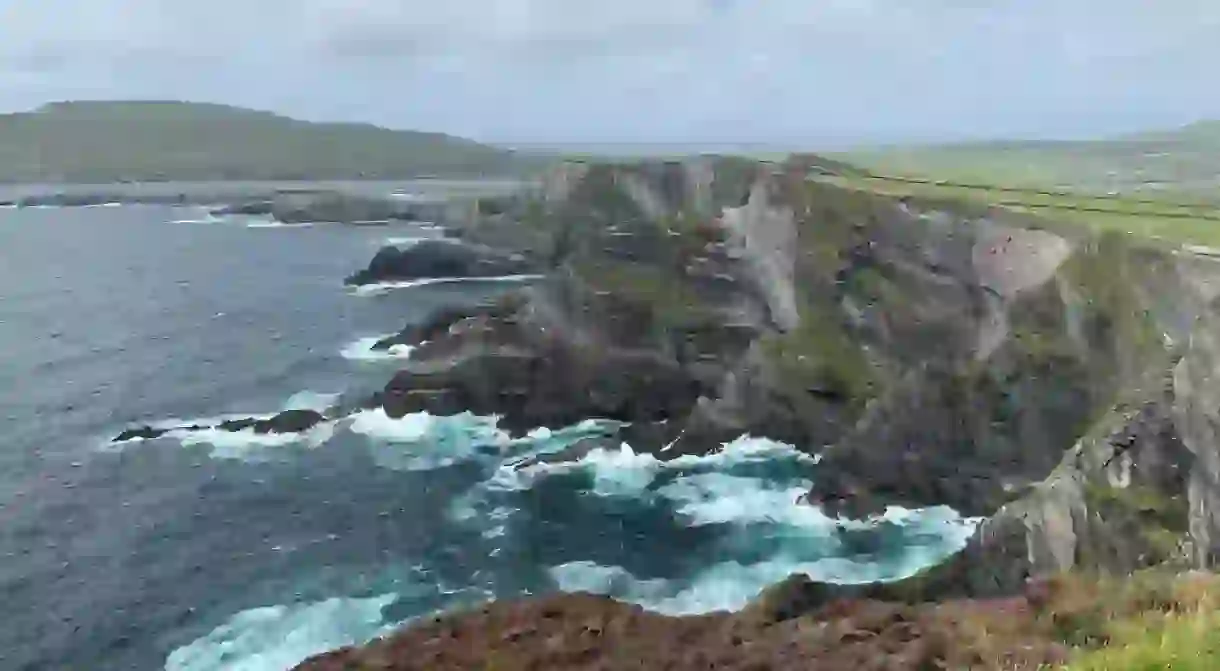21 Must-Visit Attractions in County Kerry, Ireland

Rural County Kerry is home to stunning natural sites like the Ring of Kerry, the Dingle Peninsula and the Skellig Islands. It’s also famous for Neolithic monuments, medieval castles, quirky museums and – allegedly – the world’s oldest footprints. If you’re planning a road trip around Ireland, then this great, green county is a must. Culture Trip rounds up the sites you really shouldn’t miss.
Skellig Michael
Natural Feature

Dingle
Natural Feature
This Kerry gem is the kind of place you’ll want to drive around aimlessly – its quiet coastal roads are just that beautiful. You might also want to check out the astonishing dual-use pubs (think hardware store or bicycle rental shop and watering hole), an impressive local cheese store and the famous Murphy’s Ice Cream. To meet Dingle’s most famous resident, however, you’ll need to head out on a boat tour of Dingle Bay, where Fungie the Irish dolphin plays to the crowds. You can even swim with him if you like, and if he doesn’t show up, you don’t pay.
Carrauntoohil
Natural Feature
The Ring of Kerry

Ross Castle
Forest, Park, Historical Landmark
Blasket Islands
Natural Feature
More uninhabited islands mean more great opportunities for exploration. The Blasket Islands once had a thriving Irish-speaking population, but they were evacuated due to harsh Atlantic conditions in the ’50s. Jokingly called “next parish America”, this spot is as “battered west coast” as you can hope to see. There’s beauty in that.
Kerry Bog Village Museum
Museum

The Fitzgerald Stadium
Stadium
Sure, Kerry has to play their bigger Gaelic football contests up in the capital at Croke Park, but Killarney’s Fitzgerald Stadium is the home of Kerry GAA. As Kerry is historically the king of the sport, it’s a great spot to get to know Ireland’s beloved traditional leisure offering, still going strong.
Uragh Stone Circle
Natural Feature
A Neolithic stone circle on the Beara Peninsula, this is a worthy detour. It’s easy to imagine how this isolated spot overlooking Lough Inchiquin might have integrated into ancient lives as you stand among the towering stones –the largest around 3m (10ft) – and stare down at the hills and lake that form its backdrop.
Derrynane House
Museum
Annascaul
Natural Feature
A tiny village most just pass through on the way to its neighbour Dingle, Annsacaul has one major attraction, but it’s a great one. Antarctic explorer Tom Crean comes from here, and he’s commemorated passionately in the local pub that’s colourfully dedicated to him, as well as in a new statue. With under 300 residents, Annascaul is the definition of rural, but Crean even has his own beer.
Listowel Castle
Historical Landmark

The Shannon Estuary
Natural Feature
Sitting on the border between County Kerry, County Limerick and County Clare, the Shannon Estuary isn’t commonly frequented by tourists, but it does have plenty to offer. With day-trip experiences that range from dolphin-spotting estuary tours to boat hire, there’s also some great fishing to be had near the mouth of the longest waterway in Britain and Ireland.
Eask Tower
Historical Landmark
A clunky stone tower overlooking Dingle, Eask Tower is a 19th-century structure that later became a World War II bay guardian. The structure is historically interesting, as lugging the solid stone up the hill provided work during Ireland’s deadly famine in the mid-19th century. At 184m (604ft) tall, Carhoo Hill offers far better panoramic views than you might expect from such a modest exertion.
Gap of Dunloe
Natural Feature

A fantastic drive into the Kerry Hills will lead you to the Gap of Dunloe, a narrow mountain pass through the Macgillycuddy’s Reeks – it’s a tough trail by car, but easily passable in the popular horse-pulled jaunting cars that are abundant in Killarney National Park. It’s popular to hike or bike the route, with Kate Kearney’s Cottage – a 150-year-old pub-meets-craft shop – a popular launching spot.
Banna Strand
Inch Beach
Natural Feature
Muckross House and Abbey

Mount Brandon
Natural Feature
The walk to Mount Brandon from the coast is one of a number of walks that now make up the Irish Camino, where you’ll find trails even older than the Spanish equivalent. If you’re ambitious about hill walking, we’d highly recommend the Cosán Na Naomh as an approach to the 953m (3,127ft) peak, an enticing challenge on Ireland’s ninth-highest hill.
Cosan Na Naomh
Natural Feature
Another walk (but hey, they’re one of the best things about the county), this medieval pilgrimage trek towards Brandon Mountain dates back to pre-Christian times, having almost certainly been adapted from Irish pagan rituals. It now forms part of the ‘Irish Camino’, an increasingly popular set of paths around the country that offer a stunning historic glance at ancient Ireland. On this one, you’ll find the delicate stone Gallarus Oratory that’s somehow remained water tight for a century as you pass over a gentle, rugged route. The full path, which has quite a few relics to uncover, goes from the Vartry Strand to the base of Brandon Mountain, covering 18 kilometres (11 miles).
Kerry Cliffs, Portmagee
Natural Feature

Sure, the Cliffs of Moher, to the North of Kerry in County Clare, are Ireland’s most famous seaside drop-offs. But Portmagee’s cliffs offer incredible walks, dramatic drops and views out to Skellig Michael. Why are they less popular than Moher, yet 85m (279ft) higher? Because buses can’t get here. In other words, they’re a lesser-known treat – just avoid them in strong winds.













